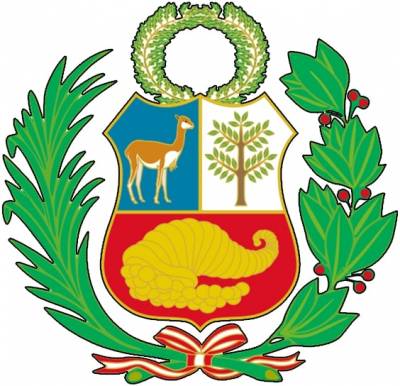The Peruvian flag is one of the country's symbols, but its origin is not entirely clear. In 1821, the flag was officially raised on the square in Lima during the declaration of independence. According to some versions, Jose de San Martin, the general who liberated the country, saw his future army with red bird wings. He decided to choose the red color of the ceremonial flag as a sign of military merit. There are other versions that claim that the colors were chosen based on the flags of Chile and Argentina, countries he also liberated. Some also believe that this choice of colors was related to San Martin's sympathy for monarchical governments. All of these versions have their own logic, and it is still impossible to find one reliable explanation. But the Peruvian flag remains a symbol of national pride and independence.
The first Peruvian flag was created in 1820. According to the decree, the Peruvian national flag was to be a silk or linen cloth. The flag was divided by diagonal lines into four fields: white - upper and lower triangles and red sides. In the center of the flag was an oval laurel wreath depicting the sun rising behind mountain ranges that towered over the calm sea.

However, in 1822 the flag was changed by the 4th Marquis of Torre Tagle. According to the new decree, the national flag of Peru consisted of two horizontal red stripes of equal width with a white stripe in the middle. The flag also features a red sun. These changes were made after the creation of a new government in Peru by the will of the people. Thus, the Peruvian flag changed, but the sun as a symbol of the sunny Inca Empire remained in its design.
In 1822, the Peruvian flag was changed because of its similarity to the Spanish flag, which made it difficult to distinguish it in armies. The new version of the flag included three vertical stripes, with a central white stripe and two red stripes at the edges. The sun, which was on the previous flag, was placed on the white stripe in the center. In 1825, the Constituent Congress of Peru approved a new flag consisting of three vertical stripes: the outer stripes were red and the central one was white. In the center was the coat of arms. Until at least 1950, when dictator Manuel Odria made changes, the flag with the coat of arms was used as the national flag, and the flag without the coat of arms was intended for traders.







